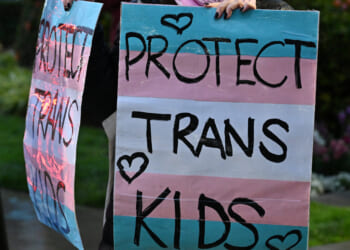Joe Egerton fought Leigh in 1992. He has had thirty years of experience in regulatory compliance having obtained one of the highest ever marks in the accounting special paper of the Oxford Management Studies MPhil.
Some readers of Conservative Home may be taking comfort from press reports to the effect that the Conservative Party raised twice as much as Labour in the last quarter of 2024.
Don’t be misled: the financial position of CCHQ is dire – a legacy of the over-centralised structure we adopted after 1997. The good news is that the financial collapse of CCHQ offers an opportunity to rebuild a national party.
In recent years, CCHQ has typically spent over £2.5m each month. In government, research and communications were bolstered by a small army of spads, who must have cost a great deal more than the £500k a month now provided to the Opposition in Short and Cranbourne money.
In the last quarter of 2024, the Electoral Commission shows the Conservative & Unionist Party as having received in total £3.8m. However, £1.5m was money paid by the House of Commons (“Short money”), the House of Lords (“Cranborne money”), and the Scottish Parliament to fund Kemi Badenoch’s office and support research and travel costs for frontbench shadow ministers and MSPs.
Of the remainder, £238k was received by constituency associations and £230k was in the form of non-cash donations. CCHQ thus received in cash a total of £1.5million in donations, or £500k a month.
This does not include money from donors who have given less than £11,180 in the calendar year, but may be inflated by including some donations actually made in earlier quarters. Looking at data for the year as a whole, it implies that CCHQ’s total income in 2024 was less than half of what it spent in the non-election years of 2020, 2021, or 2022.
The labyrinthine corporate structure of the party makes detailed analysis of how we got into this mess challenging. However the most recent published accounts, for the year ending 31 December 2023, tell us a good deal.
All the proceeds from the sale of 32 Smith Square (the building that many of us will remember the party owned outright) have gone. They went into a company called C&UCO Properties Limited (“Properties”). Properties ‘lent’ the money to CCHQ – without, according to Note 11 to the 2021 accounts, “a formal loan agreement or identifiable means for CCO to repay the loan”.
Properties has had to declare the loan “impaired”, which is accountant speak for gone – or as Boris might put it, “spaffed up the wall”. It now has to find around £250K a year “in respect of a delapidations clause within an operating lease on land and buildings.” Note 10 to the 2023 accounts showed that in December 2023, Properties had minimum lease payments due “under non-cancellable operating leases”: £918,485 was due in 2024, with a further £1,554,126 between 2025 and 2030.
The note stated that these obligations would be recovered from CCHQ. Who said our auditors lacked a sense of humour?
CCHQ does not have to publish its own separate accounts. It is required to file accounts for the year ending 31 December with the Electoral Commission, published every September. What CCHQ actually files are accounts which consolidate the income and expenditure and the assets and liabilities of itself, Properties, and those of another company, The Conservative Party Foundation Limited (“The Foundation”), all under the name ‘The Conservative Central Office’.
The Foundation receives legacies, most recently over £10m from the estate of Lord (David) Sainsbury. Article 3.1.3 of The Foundation’s Articles severely limits payments to CCHQ, effectively to £1m a year. Paragraph 7 of the Foundation’s 2023 accounts records that £10.2m is held in ring-fenced accounts subject to even further restrictions.
The filed accounts for The Conservative Central Office, signed off in May 2024, showed net assets of £18m at 31 December 2023. This was a fiction.
Although Section 43(6) of PPERA (The Political Parties and Referendum Act) provides for the Electoral Commission to make regulations for auditing party accounts, it has not done so; CCHQ’s apparatchiks have taken advantage of this omission to produce consolidated accounts treating The Foundation’s assets as available to CCHQ. That is how they generated the figure of £18m.
The strict application of the usual UK accounting standard FRS102 would not allow this. If the Electoral Commission had insisted that FRS102 be applied with rigour, then the accounts would only have shown net assets of £1.2m.
CCHQ is now in a very dangerous position financially. Donations last year have been disappointing and expenditure considerable – and time is running out.
Provided that CCHQ pays its debts when due (if it failed to, it would have problems satisfying a court that it passed the test in S224(2) of the Insolvency Act 1986), it has until July to produce accounts. The auditors will then have to confirm that CCHQ and Properties are both “going concerns”. Unless massive cuts in spending are achieved – or much more money raised – this will be challenging.
There may also be an issue over any covenants between Properties and CCHQ’s landlords. There is an unexplained item in the Comprehensive Income Statement on page 8 of Properties’ accounts for 2023, namely a combination of a reduction in debt owed by CCHQ and an almost equal surge in “administrative expenses”, which rose from £21,100 in 2022 to £1,813,263 in 2023 – an increase of 8494 per cent. This leaves no doubt that the relationship between CCHQ and Properties is complex, to say the least.
So what is to be done? Tune in tomorrow, where I’ll set out how local associations can use their very real leverage to demand an effective, and cost-effective, Central Office machine.






![‘We All Owe Him (Elon) a Huge Debt of Gratitude’ [WATCH]](https://www.right2024.com/wp-content/uploads/2025/03/‘We-All-Owe-Him-Elon-a-Huge-Debt-of-Gratitude-350x250.jpg)


![Trump's Admin Guts Another ‘Rogue Government Agency with Zero Accountability’ [WATCH]](https://www.right2024.com/wp-content/uploads/2025/03/Trumps-Admin-Guts-Another-‘Rogue-Government-Agency-with-Zero-Accountability-350x250.jpg)







